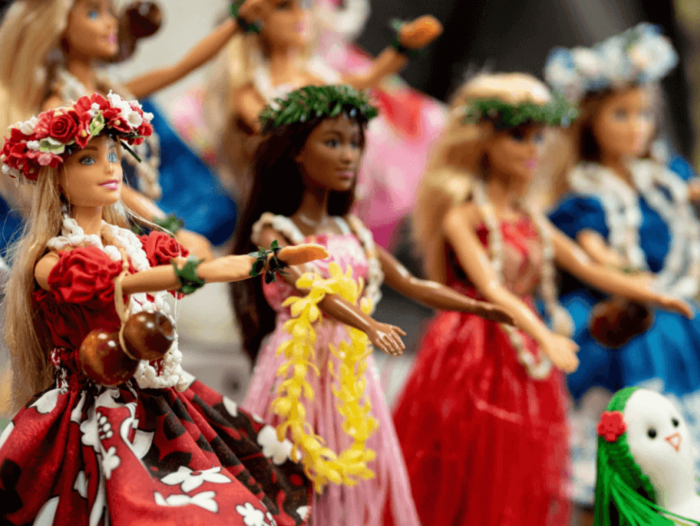The essay was originally published by Peter Isztin on this blog.
The movie ‘Barbie’ opens with a satirical scene on how the introduction of the popular doll into the market changed the way little girls see themselves and their future. Before, playing with dolls mostly prepared girls for their role as mothers, while Barbie effectively told them: you can be anything! Yet it would be patently wrong to give the main credit to the doll and Mattel for opening up many historically male professions for women. As I will argue, it was mostly economic and technological forces that changed women’s role at home and in the labour market.
Let’s start by describing the division of labour between men and women in the household. Although the precise nature of this arrangement has changed greatly over many centuries, the sexual division of labour is among the most universal phenomenon in the history of our species (and many other species as well!). A division of labour appears in the household for the same reasons it does in the market; one such possible reason is the presence of pre-existing comparative advantages (this is the more well-known story), another is increasing returns. In my view, the latter is actually more important for it shows that even when individuals are identical in each and every respect, it pays to specialize. This is because by concentrating on one task (or one collection of connected tasks) while leaving another to the other party, the individual can allocate all of her specific human capital investment to that task, becoming much better at the job than if she worked on several tasks and spread her investments accordingly. Comparative advantage need not be postulated; it is formed endogenously! And any initial difference between people, where it exists, becomes larger over time as people make different specialized investments.
So men and women, while different, may not be very different by their nature, yet become more so in the process of differential learning and socialization. It is, of course, an interesting and important question why specialization within households took on a gendered pattern. It could be due to discrimination against women (and clearly, there was much discrimination against women throughout history), gendered socialization, pre-existing comparative advantage (for instance, women being more “tied” to the home than men due to high fertility and women’s role in childbearing), or a combination of these (for a discussion, see this Gary Becker lecture, from around 1:00 hour).
The household division of labour did not mean, however, that women worked only at home. Historically, apart from their role as mothers and homemakers, women also worked on family farms, or in factories during the Industrial Revolution. Then, as households became sufficiently well-off and the sizes of households also increased, it increasingly became advantageous to have a full-time homemaker. This has lasted in rich countries until after the middle of the 20th century. Middle-class girls in that period, in fact, had one career within their sight, provided they intended to marry: that of a housewife. This was in a period when, on the other hand, the effective freedom to choose between different career paths (historically, also not very extensive!) has become much greater for boys.
All of this has changed dramatically (especially) over the second half of the last century. The causes were several and they were interconnected. First, there was a gradual change in the nature of jobs in demand. “Brains” became increasingly more important than “muscles”. Women, in turn, entered higher education in ever greater numbers, which in turn further cemented their presence in the labour market. Second, the time spent doing housework started to decrease dramatically due to the introduction of labour saving household appliances such as the washing machine. Greenwood et al, very fittingly, call these machines “engines of liberation”. Then, starting earlier, there was the decrease in fertility, and a demographic transition with a move away from the “quantity” toward the “quality” of children. People started to have fewer children but invested more in each child. Relatedly, modern methods of contraception, such as “the pill”, had appeared and spread, allowing women to better manage their education and labour market participation. Finally, discrimination against women has started to crumble, at least in rich countries. It was against this backdrop that Barbie was introduced, just in time for credibly telling little girls they can become anything; even doctors or lawyers. There still, however, exists a “glass ceiling” in that men are still more likely to hold positions of leadership in both the private and the public sector than women. Maia Mindel details the main causes of this on her substack, so I won’t go into details here. However, men are not only overrepresented on the top, they are also overrepresented on the bottom of the income (and status) distribution. Outcomes for men always had a greater variance, but there has been a clear trend over the past few decades of girls and women steadily overtaking boys and men in education. In particular, while demand for high-skilled labour increased steadily, supply (recently) did not keep pace; and the main reason is boys, not girls, lagging behind. Boys are less likely to finish high school, or the equivalent, and less likely to earn a college or equivalent degree. (This is true even in a country like Iran!) In the increasingly knowledge-based economy and society we live in this casts a bad spell on the lives of too many men. Several explanations have been put forward to account for this; in my view the most promising are that there has been an increase in the number of children raised by single parent households, especially among blacks, and this is, as research consistently shows, especially hard on boys (this book should be a great introduction to the topic); and that girls are in general “better students”, for whatever reasons. As discrimination against women in education crumbled while boys suffered from the breakdown of families, the natural advantage girls perhaps always had in learning could come to dominate. Thus while she may not yet be everything, he (the left tail of his distribution, that is!) is often really “just Ken”. Or worse, as high school and college dropout men also have a low value in the marriage market. In the Barbie movie, Ken, tired of being “just Ken”, discovers and embraces the “Patriarchy” while touring the real world. Yet, as he soon finds out, without marketable knowledge and skills, he is still just Ken even in a world where, indeed, most corporate leaders are men. Thus he returns to Barbieland to establish his own peculiar version of patriarchy there. This is a good allegory of men with sufficient sense of entitlement but insufficient human capital going astray in the modern world. All of this is played out while girls and women still facing disadvantages in education in much of the developing world. The task before education policymakers and philanthropists of the world is thus dual: ameliorate the educational difficulties of boys present especially in the rich world (it is not an easy task, but would certainly involve better schools and more competition between schools, quality early education for disadvantaged kids, rewarding, attracting and retaining good teachers, firing bad ones, and maybe bringing in more male teachers), while bringing down the still existing barriers girls face in their education in many poorer countries.
Meanwhile, increasing flexibility in many jobs may narrow the gender gap in the hourly earnings of men and women. The Barbies and Kens may be in for a better future, but there remain serious challenges down the road.
Photo above by Sean Bernstein on Unsplash

